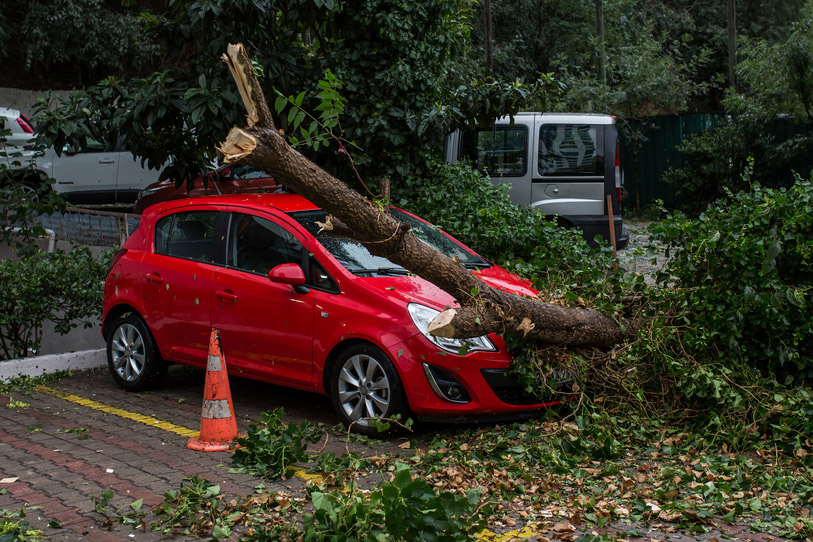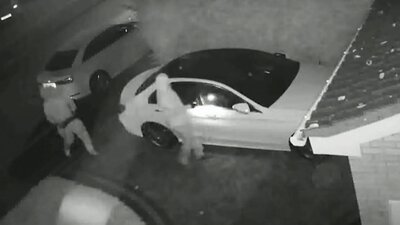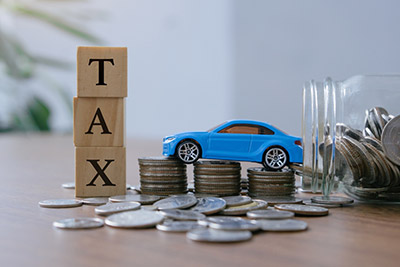Drivers can damage a motor vehicle beyond repair due to crashes, but sometimes write-offs stem from a severe weather event, including hail.
So, what are the differences between the types of written off vehicles, and what can you do if you write off your car? Perhaps more importantly, what can you do to check the history of a motor vehicle you intend to buy?
What is a Written off Vehicle?
If your vehicle is 'written off', it means that the cost of repair outweighs the value of your car. In other words, it's uneconomical to repair.
Alternatively, your car has suffered significant damage and is unsafe to drive. In some cases, it's not possible to repair written off vehicles at all.
Older vehicles are more likely to be written off, partly because they are more expensive to repair. It may also be challenging to source the parts.
What is the Written Off Vehicle Register?
The written off vehicle register (WOVR) records written off vehicles for the purpose of tracking their repair status and whether they're safe to be on the roads.
The WOVR records cars according to their vehicle identification number (VIN), which means this information is permanently recorded.
Formerly, criminals could buy a damaged vehicle at auction houses, obtaining the vehicle identification number of a legitimate, registered car. Then, they could steal a car of the same make and model and replace the VIN with that from the damaged car they bought; this process is called "rebirthing."
The WOVR prevents this process because people cannot re-register statutory written off vehicles. Insurers and licensed motor traders must notify their local authorities to add a vehicle to the WOVR before disposing of it.
For example, those in Victoria need to inform VicRoads within seven days of receiving a written off vehicle. VicRoads will then add the car to the written off vehicle register.
Types of Write Off
There are a few types of write-off to be aware of. It depends on the type of damage sustained by the vehicle and whether it can be repaired.
Repairable Write Off
A repairable write off is when a car obtains damage, but it can still be repaired. However, the insurance company refuses to pay out because the cost of repairing the motor vehicle is too high. It's easier to make an insurance payout to the customer rather than repair the car.
However, it is possible to repair the vehicle. Someone with specialist skills and the necessary parts or scrap metal can repair the car and get it back on the road once it's safe to drive. Notably, it will be costly to do so.
In some states and territories, it is possible to re-register a written off vehicle following a repairable write off. In New South Wales, however, the car cannot be used again. That said, cars with hail damage can be re-registered if you can repair the vehicle.
Even if a car has gone through a repairable write off and is back on the road, you can expect to pay more insurance because the vehicle identification number will be listed on the WOVR. An accident is likely to cause more damage to the car, so insurance companies will usually charge higher rates.
Statutory Write Off
If a motor vehicle is damaged to such an extent that it cannot be repaired safely, then it is considered a statutory write off. Any written off vehicle of this nature must be recorded on the WOVR.
Unlike a repairable written off vehicle, a statutory write off cannot be re-registered in any state or territory. It is only suitable to be disposed of for parts or scrap metal. However, any section of the car containing the vehicle identification number stamping cannot be reused.
Statutory write offs have some conditions that apply in most states. The details differ slightly, but these are the major factors that qualify light vehicles for a statutory write off:
- At least three indicators of excessive structural damage
- Excessive fire damage that includes blistered paint
- Excessive water damage from fresh water, salt water, or brackish water, with immersion to a level of the inner door sill
- Excessive stripping damage
Damage can apply to both the internal cabin and the exterior body parts.
What Are Your Options After a Vehicle Write Off?
With a repairable written off vehicle, you can get it back on the road as long as you can pay for the damages. You need to inform your insurance company early on in the process that you intend to repair it, or if you need to dispose of it.
If you have written off a car that's on finance, things are slightly more complicated. Your insurer can pay you the value of the vehicle at the time, but if you paid more for it, then the onus is on you to pay the difference to the dealer.
The vehicle identification number will go onto the WOVR, which will always show up in a car history check. Registration is automatically cancelled for written off vehicles, so the car needs to be re-registered if you intend to drive it again.
The insurance on a previously written off vehicle will also be higher. With the costs of repairing major damage, registering the car again, and paying higher insurance, it's usually uneconomical to go through this process, even if it's technically a repairable write off.
Instead, it's probably better to go down the route of getting a brand new car. You can opt for a new or used vehicle depending on your preferences and needs.
Notably, you can dispute a write off, but you need to act quickly before the insurer moves to register WOVR. It's very difficult to get insurers to change their mind, but armed with evidence about repair costs from salvage yards and garages, you might be able to swing it. In most cases, disputes are not accepted, but it's not an impossibility.
Can I Buy, Sell, or Register a Written off Vehicle?
Registering written off vehicles depends on the damage sustained. In most states and territories, repairable write-offs can be re-registered once they are deemed roadworthy. New South Wales is the one exception to this rule.
However, re-registration is not possible for statutory write-offs in any Australian state or other Australian jurisdiction.
As long as you have the vehicle's registration following repair, you can sell written off vehicles safely and legally. You can also buy a written off vehicle, but it's important to check the history of any used car you buy to ensure you know what you're getting into.
How Can I Check if a Vehicle Has Been Written Off?
Using the vehicle identification number (VIN), you can get a car history check to see if a car has previously been written off. History checks can also inform you if it is or was a stolen vehicle.
The comprehensive history check from Carify can even give you a map detailing structural frame damage and showing you which parts of the car were repaired. Other reports can provide you with damage codes, but Carify highlights exactly where the vehicle sustained damage.
All you need is the VIN or rego to check if a vehicle was ever damaged or written off. This is essential information to check before investing in a new car, so don't skip getting a car history check.
Final Thoughts
Writing off a vehicle is not always a death sentence for the car. Plenty of vehicles are repaired following a write off, with many re-registered and back on the roads in no time.
If you are worried following an accident, don't panic. Notify your insurer about the incident and get them to take a look; they can check the damage, tell you about the category of write-off, and pay out according to the value of the vehicle.
Depending on the incident, you can repair the car or invest in a new vehicle. Just make sure if you opt for the latter to invest in a car history check.
FAQs
How Is Market Value Calculated?
An insurer will work out the market value of your vehicle by assessing similar makes and models in a variety of sales locations. They will also consider the odometer reading and the condition of the car following the accident. Finally, the insurer may also take unused registration and CTP insurance into account.
What's the Difference Between WOVR and PPSR?
The Personal Property Securities Register (PPSR) is another register you can check before buying a car. The PPSR will tell you if there is still finance owing on the vehicle, along with other helpful information and details about the car, such as safety recalls. Meanwhile, the WOVR exists solely to tell you if a car has ever been written off. You can check both registers with a car history check from Carify.
Can I Salvage Parts from a Written off Vehicle?
Most of the time, your insurer will sell the scraps from the vehicle to make back the money. However, you can ask to keep it. If they let you, then they will deduct the value of the scrap from your payout. Keep in mind that it can be expensive to transport the 2-tonne+ car wreckage, and it's unlikely that your insurer will pay to help you.





